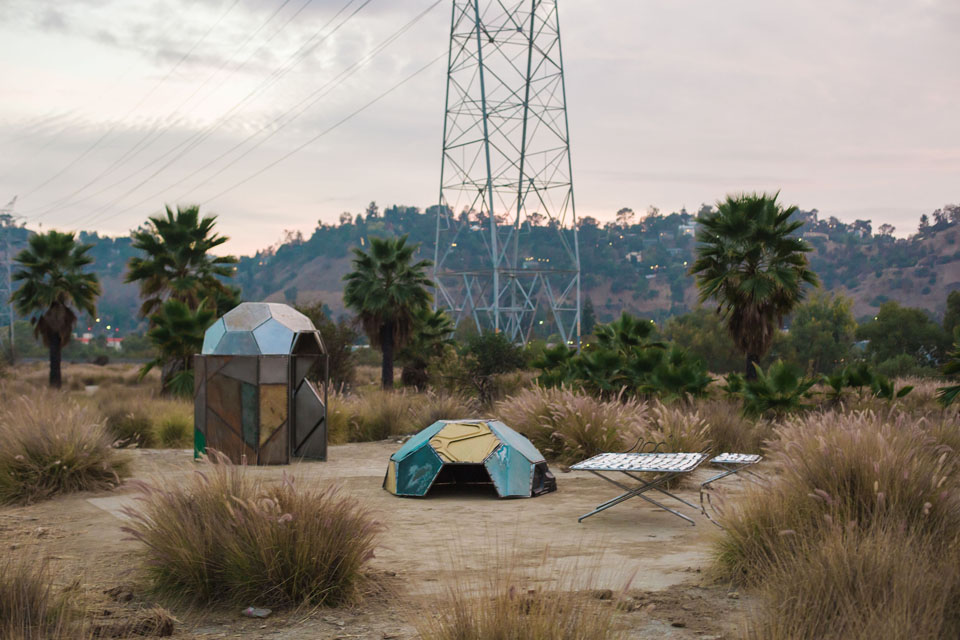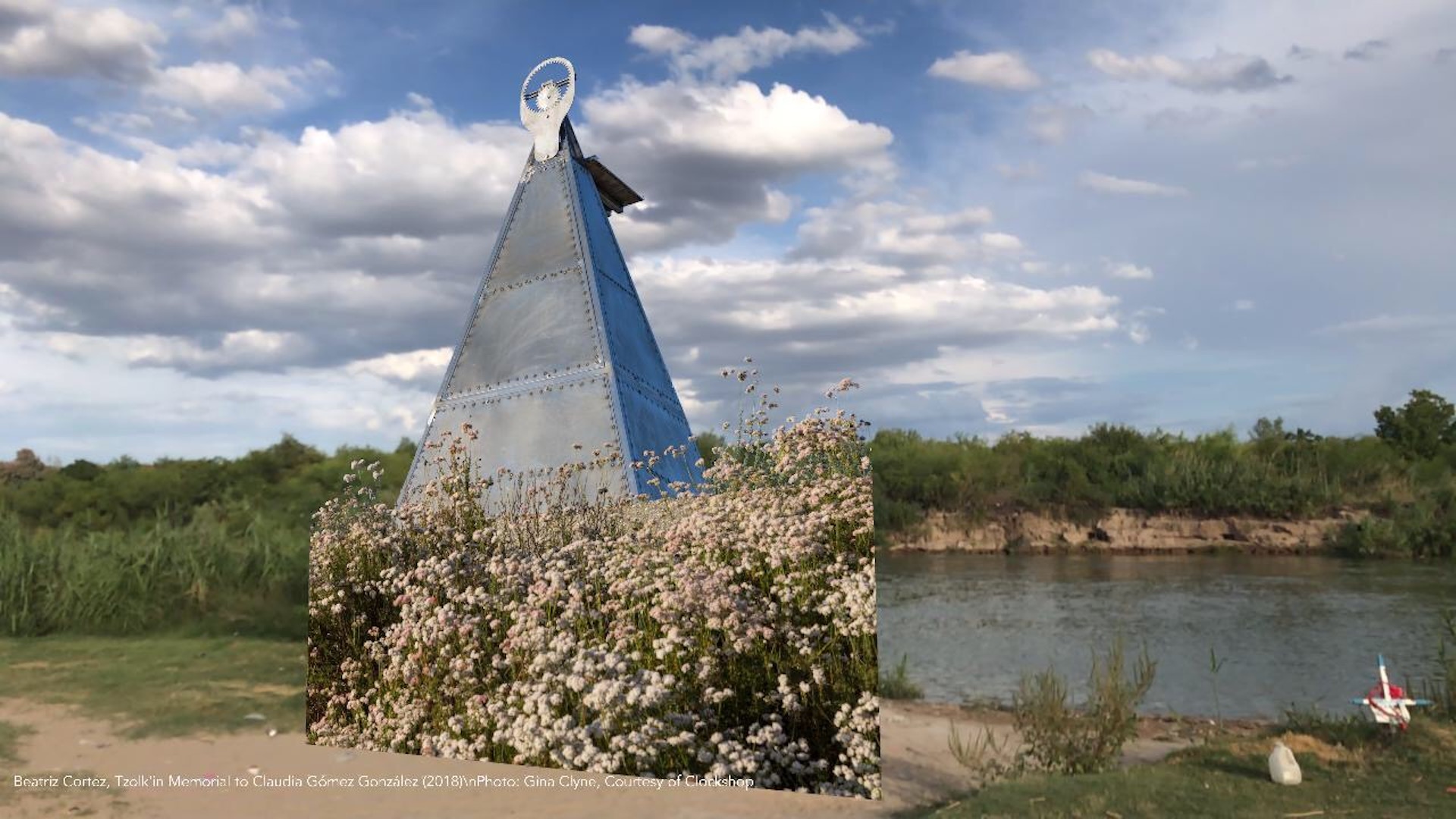My heart belongs with my body

The Los Angeles-based, San Salvadoran artist Beatriz Cortez, recently awarded the inaugural Frieze Arto LIFEWTR® Sculpture Prize, talks about her new work for Frieze Sculpture New York at Rockefeller Center, and reflects on migration, simultaneity, loss and her ideas on planetary motion.
Few issues excite controversy like migration, in part because it touches on so many others, such as economics, demographics, politics, national security, culture and language. Most of our contemporary debates on migration examine it from contemporary viewpoints.
But what if we would understand it not from a historical as a planetary motion?
The Los Angeles-based, San Salvadoran artist Beatriz Cortez has her own, very philosophical understanding of migration. Her work is a multidimensional journey of discovery, an invitation to rethink our concepts of heritage, and home, and in this respect her art examines migration from a very different angle than usual.
Her perspective on migration is not a historical one; rather, she understands migration as a planetary motion that has existed for millions of years. Cortez’ philosophy comes with a strong belief in the potential for divergent entities to coexist, and thus there is a very positive, uplifting element in her work.
Her latest kinetic sculpture combines steel plates with living plants and indigenous seeds. Forces in opposition work together, forming a unity where organic and industrial, cold and warm work together. Beatriz Cortez has just been awarded the Frieze Arto LIFEWTR®Sculpture Prize.

Interview
Beatriz, some weeks ago you were announced as the inaugural Frieze Arto LIFEWTR®Sculpture Prize winner. Your proposal was selected from over 120 applications. The award enables you to create a major new work for Frieze Sculpture at Rockefeller Center, New York, that will be unveiled in April 2020. Your winning sculpture will evoke a glacial erratic rock, similar to the numerous glacial erratics that define the landscape of New York City.
Could you tell us more about this project?
I am so excited to have the opportunity to install my work at Rockefeller Center, such an iconic place in the heart of New York City, a place where 50 years ago, my parents lived as immigrants, and where they did not come across work that spoke of their experience. But my work is not about a historical perspective on migration, but, rather, a reflection on migration as a planetary motion, one that has existed for millions of years.

Manhattan exposed to light and cosmic rays
As I was working on this proposal, I spent time walking through New York City, and I understood that the glacial erratics are an important presence in the city, and that they were moved there by the planet millions of years before our time.
And this is how I began research and to understand that during the Ice Age, the melting ice opened grooves on the Manhattan bedrock and also deposited numerous glacial erratics all over the landscape. These large masses of rock in mineral content, in look, in size, and shape, from the native rocks in the local landscape. In Central Park, in Prospect Park, in Battle Hill, in the Bronx, among many others all over the City, the matter that forms these rocks documents their migration before the human era, as well as the moment in which they emerged from the ice cap cover.

Beatriz Cortez, The Memory Insertion Capsule, 2017. Steel, archival materials on video loop. Installation view at UCR Arts, Riverside. Courtesy of the artist and Commonwealth and Council. Photo: Nikaly Maslov.
As they were exposed to the light and to cosmic rays, the erratics were also touched by radiation, generating a process that documents their migration and the passing of time.
The sculpture made of steel evokes an erratic as it invites the viewer to consider the long counts of time that are marked by the motions of the planet, the planetary nature of ancient migration, as well as the ways in which matter is marked by its placement and its interactions with the world around it.
Breaking walls with Augmented Reality
Let’s talk about Coordinates. You were among the first six artists to participate in Nancy Baker Cahill’s Coordinates project, an ongoing series of curated, collaborative and site-specific AR public art exhibitions accessible through the 4th Wall app. The project breaks walls by taking us outside brick and mortar galleries and museums to see activist art live.
What can ART do that reality can’t?
You ask what can AR do that reality can’t do (with regards to Coordinates), but I ask what is reality?
I think what AR can do is allow us to visibly consider potentialities, possibilities, and also to experience simultaneities, portals to multiple dimensions that are already part of the universe, even if our senses don’t always perceive them. It is a medium that allows us to augment a machine eye to our imperfect, limited human eye, to expand the possibilities of what we can see in front of us, to open up other dimensions and other temporalities.
I think it is an amazing project with multiple possibilities. I am so proud that I was able to participate in Nancy Baker Cahill‘s Coordinates project, and often I think about it and I imagine seeing multiple visions.
Or sometimes, I go by places knowing that a work of art is there, even if my human eyes don’t see it. I love it.
Your Coordinates project, a site-specific sculpture called Tzolk’in, is inspired by a Maya ancient 260-day agricultural calendar. I read that it is a memorial for Claudia Gómez González, a Guatemalan girl shot by a border control while crossing the border from Mexico to the United States. Migration is one key topic of our times.
Aesthetics and process aside, which emotion do you want to trigger with your work and why?
I was working by the Los Angeles River, installing a sculpture made of steel called
She probably did not speak English and did not understand what was happening. When making a monument to her memory, I was trying to honor her life, and her ancestors, and at the same time I was trying to express my sorrow because as I was building a monument to the knowledge and technologies of the ancient Maya in front of the Los Angeles River, a Maya woman was being shot by the banks of the Rio Grande.

Placing a virtual monument close to the place where she was murdered was also my way to honor her parents, to let them know, we see you, we hear you, we are with you.
Also, it is a way to say to all migrants who cross the Rio Grande, this is a complicated country.
There are people here that will receive you with violence, but there are people here that will receive you with love.
Placing the piece was super moving for me because a curator from a museum in Nuevo León and her daughter helped me. They had to go there and see the piece, take photos, help me place it, and they did all this without knowing me because they felt it was important to contribute to send a message about her, about her life cut short, about this injustice.

Where the heart belongs
Conceptually, your works explore simultaneity, Nomadism, ancient and contemporary modernities and technologies, loss and the experience of migration. You were born in El Salvador and are currently based in Los Angeles.
My heart belongs to Los Angeles and to San Salvador, the two cities that are my homes. Sometimes, my heart belongs to the Pacific Ocean, the body of water that unites my two homes. But more importantly, I believe in Nomadism. My heart belongs with my body, it goes with me where I go, it lives here now but my heart and I can survive, and live, and love in other landscapes and other worlds.

Which of these elements (space, air, fire, water, earth) would you choose in relation to your practice and yourself, and why?
I would choose air as my element because I am exploring the idea that the atmosphere is where all the bodies that share this world come together, like Emanuele Coccia says, it contains “the infinite mixture of all things past, present, and future.“
If you could change something in the (art) world, what would it be?
If I could change something in the art world, I would like for every artist to find a beautiful community where to engage in dialogue and art making as the one I found at Commonwealth and Council. It has made an enormous difference in my life to have this amazing group of people and this place at the heart of Korea- town and the Central American district as the center of my art world.

Please tell us what you are currently working on and what you are looking forward to this year in terms of exhibitions?
I am currently working on several projects that are very dear to me. First, I am making a couch for the installation of a video called Childhood Bedroomin for an exhibition in Los Angeles. I am building the couch from memory, it is the couch that I used to have in my bedroom.
I am also making a cherry blossom tree as an homage to the Japanese gardeners who built a garden for the children who were sent to Manzanar. I hope to install it at Descanso Gardens as part of an exhibition that an artist I admire so much, Debra Scacco, is curating.
And also, I am working on my show for Commonwealth and Council; it is about sound and will be called Other Frequencies. These days, I am also spending my time making Glacial Erratic for Rockefeller Center.
For next year, I am also looking forward to working with my friend Kang Seung Lee, an artist that I love and admire, for a show together at 18th Street Art Center.
The future is…?
… wide open
UPCOMING EXHIBITION:
In Plain Sight
Curated by Shamim Momin
Henry Art Gallery
November 23, 2019 – April 26, 2020
Find out more about Beatriz Cortez projects on her website!
Header Photo: Beatriz Cortez “Tzolk’in Memorial to Claudia Gómez González” (2018) Parque Viveros, Nuevo Laredo, Mexico
Author: Inga Nelli